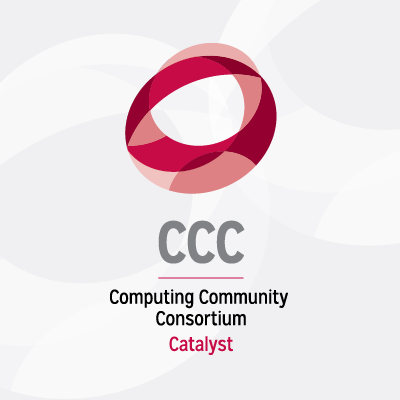Artificial intelligence stands at a “great juncture,” a moment brimming with excitement and profound responsibility. This was the central theme of a recent insightful panel discussion where leading minds in AI — Yolanda Gil (University of Southern California), David Jensen (University of Massachusetts Amherst), Aarti Singh (AI Institute for Societal Decision Making), and Bart Selman (Cornell University) —explored its current trajectory and charted its future horizons. The panel was moderated by Bob Bond (Massachusetts Institute of Technology). The conversation moved beyond the hype, offering a grounded yet ambitious vision for where AI is headed and what it will take to get there responsibly.
Shifting the Focus of AI Development
Singh described a need to evolve AI development. For too long, the primary focus has been on improving the accuracy of predictive models. A critical shift is needed where developers of AI, from the earliest stages of design, consider the downstream consequences and societal impacts of the systems they are designing. This involves not just building smarter algorithms, but also integrating domain-specific knowledge, human feedback, and a deeper understanding of the people and organizations affected by an AI system. Robust, interdisciplinary partnerships are also crucial, especially in domains without strong market forces (like disaster management or public health policy).
Jensen posited that the current AI paradigm, largely dominated by large language models (LLMs) and deep networks, is powerful but not final. The history of AI is one of continuous evolution, and we should anticipate and actively explore future paradigms: “one of the consistent problems that all sciences have is that the current paradigm always seems like the final one, because we tend to focus on how to exploit that particular paradigm. We are blind to (or choose to ignore) the things that the current paradigm doesn’t do particularly well, and the things that are going to be the seeds of the next research paradigm.” Research paradigms such as quantum AI, embodied AI, neuro-symbolic AI, and neuromorphic computing were floated as examples of possible future paradigms, reminding us that what seems like the ultimate approach today is often a stepping stone to the next approach.
Building on that, Selman identified an exciting trend today: the “reintegration” of AI’s diverse subfields. Areas like language understanding, computer vision, machine learning, reasoning, and planning, which had become somewhat siloed, are now increasingly converging. This synergy, often leveraging the capabilities of LLMs but extending far beyond them, is seen as crucial for tackling more complex problems. Furthermore, AI’s true impact will be realized through deep, interdisciplinary collaborations with the physical and social sciences, mathematics, and engineering. Selman concludes, “We’ll see a lot of activities around accelerating scientific discovery and engineering methods using AI.”
Gil agreed that experimental research in the field of AI holds immense promise, especially given the burgeoning interest from younger generations. Gil highlighted the transformative potential of foundation models in science and medicine, the push towards more integrated AI systems combining diverse capabilities like reasoning and collaboration, and the thrilling advancements at the intersection of AI software and cutting-edge hardware, such as new memory technologies and quantum communication. AI’s progress is deeply intertwined with collaborative efforts across diverse fields, promising significant short-term impacts.
Making Progress Toward a Collaborative and Responsible Future
The rapid rise of LLMs, while surprising to many, was acknowledged as an accelerator for many long-standing AI research goals, including integrated intelligence and meaningful human-AI interaction. When the panelists were asked about their perspective on artificial general intelligence (AGI), they offered a nuanced perspective. Rather than a binary future event that either will or will not come to fruition, AGI can be seen as an evolving spectrum of capabilities. The emphasis, however, should be on creating assistive technologies that augment human capabilities and benefit society, rather than purely chasing a human-like intelligence. The discussion also touched on the importance of AI safety and governance, especially as AI systems themselves might play a role in developing future AI systems.
Despite the dizzying pace of recent advancements, the foundational research challenges identified in AI roadmaps even a few years ago remain profoundly relevant. Academia continues to play a crucial role in pushing boundaries, fostering unexpected breakthroughs (sometimes with leaner teams than large industry labs), and ensuring a pipeline of talent equipped with both technical and “soft” skills to translate research into real-world impact.
Overall, the panel painted a future for AI that is dynamic, complex, and full of potential. It’s a future that demands not only technical brilliance but also foresight, ethical consideration, and a collaborative spirit. This “triad” sees academia driving innovation, industry enabling applicability, and government partnering with both to provide guiding principles and essential resources. As AI continues to integrate more deeply into the fabric of our lives and systems, the ongoing dialogue between researchers, developers, policymakers, and the public will be more critical than ever.
A recording of the “Future of AI Horizons” panel will be available in the coming weeks, along with recordings and blogs highlighting the other panel and keynote sessions from the Computing Futures Symposium. Keep an eye out for recaps of these important discussions!
Lastly, if you enjoyed this content we encourage you to check out the Future of Information Retrieval Research in the Age of Generative AI CCC Workshop Report, the Making a Case for Research Collaboration Between Artificial Intelligence and Operations Research Experts (AI-OR 3 Report), and the Catalyzing Interdisciplinary Computing Research: Best Practices for Researchers and Funders for more recent insights about the future of AI and the need for interdisciplinary collaborations from the CCC community.









